Results
-
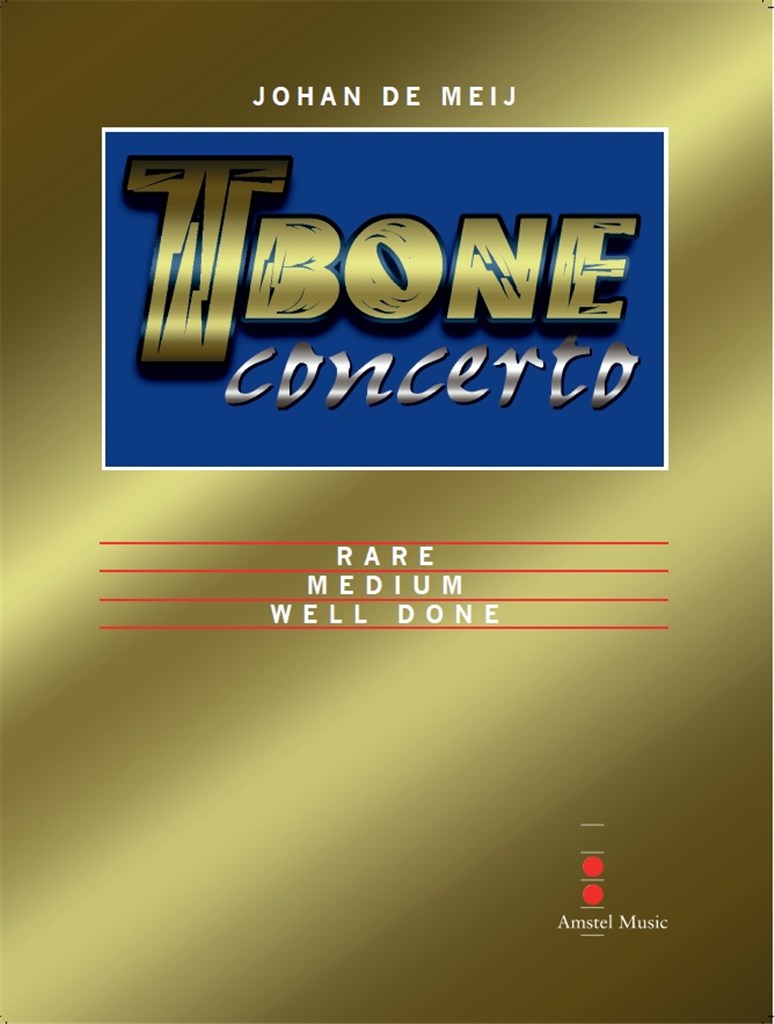 £344.00
£344.00T-Bone Concerto (Trombone Solo with Concert Band - Score and Parts) - De Meij, Johan
The T-Bone Concerto was Johan de Meij's first composition for solo instrument and symphonic band. It consists of three movements called respectively 'Rare', 'Medium' and 'Well Done'. In addition to the solo trombone, an important role has been allotted to a kind of chamber music ensemble within the band. This group introduces new thematic material and accompanies the soloist, thus creating a delightful transparant accompaniment. The ensemble consists of a double wind quintet (2 flutes, 2 oboes, 2 clarinets, 2 french horns and 2 bassoons) plus a cor anglais and a double bass. Parts I and II are written in the A-B-A form and allow the soloist to display both the technical and the lyrical characteristics of the instrument. Part III at first develops into a kind of neo-baroque style using the thematic material of the first and second movement, and finally leads to a triumphant finale and a virtuoso conclusion. Duration: 25.00
Estimated dispatch 7-14 working days
-
 £111.00
£111.00Well Done (Movement III from T-Bone Concerto) (Trombone Solo with Concert Band - Score and Parts) - De Meij, Johan
The T-Bone Concerto was Johan de Meij's first composition for solo instrument and symphonic band. It consists of three movements called respectively 'Rare', 'Medium' and 'Well Done'. In addition to the solo trombone, an important role has been allotted to a kind of chamber music ensemble within the band. This group introduces new thematic material and accompanies the soloist, thus creating a delightful transparant accompaniment. The ensemble consists of a double wind quintet (2 flutes, 2 oboes, 2 clarinets, 2 french horns and 2 bassoons) plus a cor anglais and a double bass. Parts I and II are written in the A-B-A form and allow the soloist to display both the technical and the lyrical characteristics of the instrument. Part III at first develops into a kind of neo-baroque style using the thematic material of the first and second movement, and finally leads to a triumphant finale and a virtuoso conclusion. Duration: 6.15
Estimated dispatch 7-14 working days
-
 £111.00
£111.00Medium (Movement II from T-Bone Concerto) (Trombone Solo with Concert Band - Score and Parts) - De Meij, Johan
The T-Bone Concerto was Johan de Meij's first composition for solo instrument and symphonic band. It consists of three movements called respectively 'Rare', 'Medium' and 'Well Done'. In addition to the solo trombone, an important role has been allotted to a kind of chamber music ensemble within the band. This group introduces new thematic material and accompanies the soloist, thus creating a delightful transparant accompaniment. The ensemble consists of a double wind quintet (2 flutes, 2 oboes, 2 clarinets, 2 french horns and 2 bassoons) plus a cor anglais and a double bass. Parts I and II are written in the A-B-A form and allow the soloist to display both the technical and the lyrical characteristics of the instrument. Part III at first develops into a kind of neo-baroque style using the thematic material of the first and second movement, and finally leads to a triumphant finale and a virtuoso conclusion. Duration: 8.30
Estimated dispatch 7-14 working days
-
 £111.00
£111.00Rare (Movement I from T-Bone Concerto) (Trombone Solo with Concert Band - Score and Parts) - De Meij, Johan
The T-Bone Concerto was Johan de Meij's first composition for solo instrument and symphonic band. It consists of three movements called respectively 'Rare', 'Medium' and 'Well Done'. In addition to the solo trombone, an important role has been allotted to a kind of chamber music ensemble within the band. This group introduces new thematic material and accompanies the soloist, thus creating a delightful transparant accompaniment. The ensemble consists of a double wind quintet (2 flutes, 2 oboes, 2 clarinets, 2 french horns and 2 bassoons) plus a cor anglais and a double bass. Parts I and II are written in the A-B-A form and allow the soloist to display both the technical and the lyrical characteristics of the instrument. Part III at first develops into a kind of neo-baroque style using the thematic material of the first and second movement, and finally leads to a triumphant finale and a virtuoso conclusion. Duration: 10.30
Estimated dispatch 7-14 working days
-
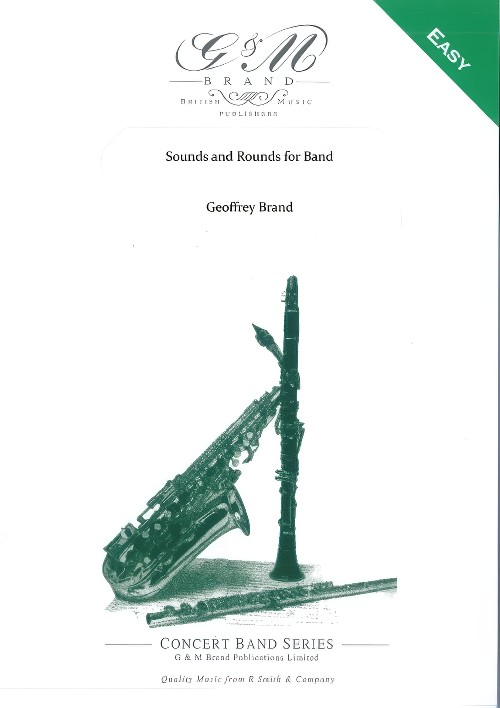 £59.95
£59.95Sounds and Rounds for Band (Concert Band - Score and Parts) - Brand, Geoffrey
If you have ever stood before a Concert Band and wondered how you may best help them to sound better then SOUNDS will help. SOUNDS are exercises designed to improve DYNAMICS, RHYTHM, CRESCENDO and DIMINUENDO, INTERVALS, RESTS and ACCENTS. The exercises can also be used for warm-up purposes. They are interesting to play whilst creating an awareness of some of the fundamentals of good performance. ROUNDS are a form of Canon in unison (or octaves) with the players entering at regular rhythmic periods. The first Rounds were printed in 1609 so people have enjoyed performing this form of music for a very long time and still do. Kookaburra comes from Australia, Row Row Row the Boat is English, Frre Jacques is French and in this version a variation on the original melody has been added which also works as a round and adds to the fun. A full score has been provided in order to facilitate rehearsal.
Estimated dispatch 7-14 working days
-
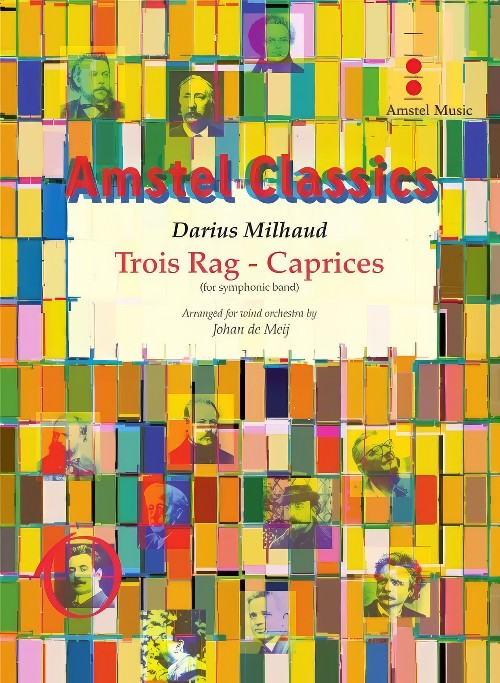 £148.00
£148.00Trois Rag - Caprices (Concert Band - Score and Parts) - Milhaud, Darius - De Meij, Johan
The French composer Darius Milhaud (1892-1974) was a member of the Groupe des Six. This group of six composers gathering Honegger, Poulence, Auric, Durey, Tailleferre and Milhaud, imitated Erik Satie by revolting against the deeply rooted traditional conventions of that time. They reacted against impressionism (Debussy) and romanticism (Wagner, Mahler) and felt very strongly about the music of Satie and Stravinsky. Milhaud's most popular work is undoubtedly the ballet La Creation du Monde, one of the most striking examples of jazz influences in classical music. The premiere at the Theatre des Champs Elysees in October 1923 caused a real scandal with the Paris public. The Trois Rag-Caprices for piano were composed one year earlier, in the summer of 1922, and could be considered as a kind of preliminary sketch for La Creation du Monde. There are indeed clear similarities between both compositions as to the rhythmical and harmonic aspects. The Trois Rag-Caprices were orchestrated for symphony orchestra by Milhaud himself some time later. The same happened to Saudades do Brasil (1920), a piano composition punctuated with Latin-American influences, which was written after his stay in Rio de Janeiro (1917-18) exactly as his ballet Le Boeuf sur le Toit. Johan de Meij's orchestration of Trois Rag-Caprices for symphonic band is a most welcome addition next to the original band works of Milhaud, such as Suite Francaise (1945) and West Point Suite (1951).Duration: 8.00
Estimated dispatch 7-14 working days
-
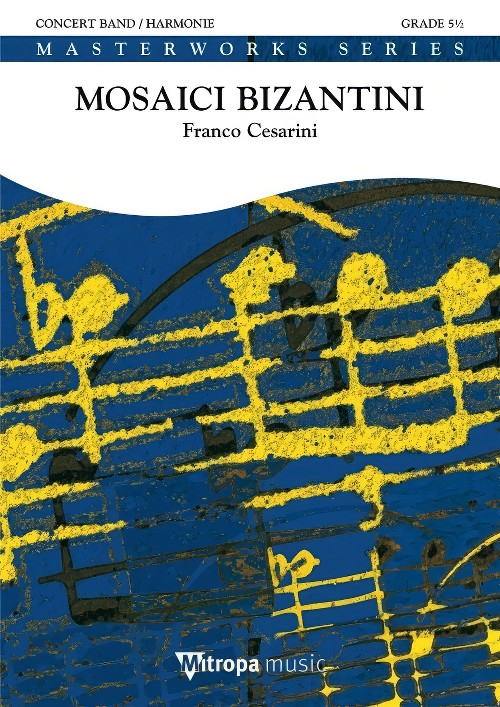 £233.50
£233.50Mosaici Bizantini (Concert Band - Score and Parts) - Cesarini, Franco
Three Byzantine mosaics, to be seen in churches in Venice and Palermo inspired Franco Cesarini to compose this work. He took the musical motives from Gregorian chants. The mosaics concerned depict the following extracts from "The Gospel According to St. Matthew".I. The Nativity: The Magi from the East: "Where is the new-born King of the Jews? For we have seen his star in far-off eastern lands and we have come to worship Him."II. The Temple of Jerusalem: And look! The curtain secluding the Holiest Place in the Temple was split apart from top to bottom: and the earth shook and rocks broke, and tombs opened and many godly men and women who had died, come back to life again.III. Angel of the Resurrection: An angel of the Lord come down from heaven drew near, rolled away the stone and sat upon it. His countenance was lightning and his attire white as snow.Duration: 19:45
Estimated dispatch 7-14 working days
-
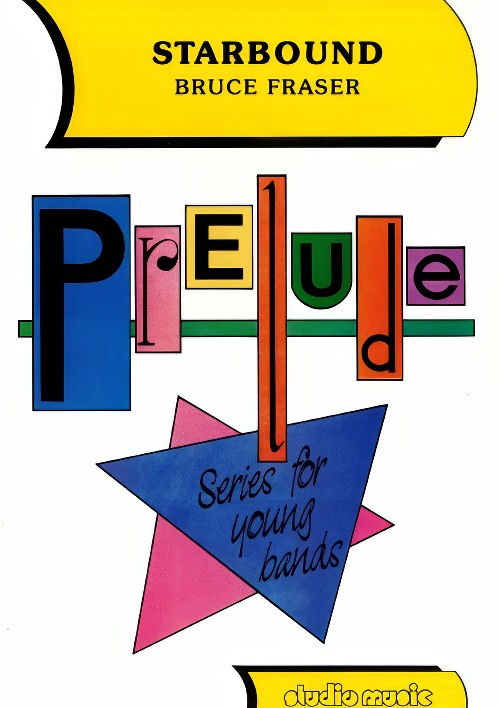 £44.95
£44.95Starbound (Concert Band - Score and Parts) - Fraser, Bruce
Starbound is a strong, driving piece and relies on good rhythmic playing from the bass instruments. It is a good introduction to playing triplets for all sections of the band and this could be introduced in the preliminary exercise. The trumpet solo could be played by the whole section if preferred.Titles in the Prelude Series are specifically scored for bands with few, if any, bass instruments but will sound well on larger ensembles. The bass line is playable by any combination of bass clarinet, bassoon, baritone saxophone, trombone, euphonium or tuba; in the event that none of these is available, the part for trombone/euphonium (B flat TC) can be played by tenor saxophone. The tuned percussion part is entirely optional and can be played by any available instrument(s). Each piece also includes a preliminary exercise. This is always in the same key as the accompanying piece and consists of a scale and chord progression that can be used for improving ensemble, balance, intonation and instrumental facility by changing tempo, articulation and dynamics.Duration: 1:45
Estimated dispatch 7-14 working days
-
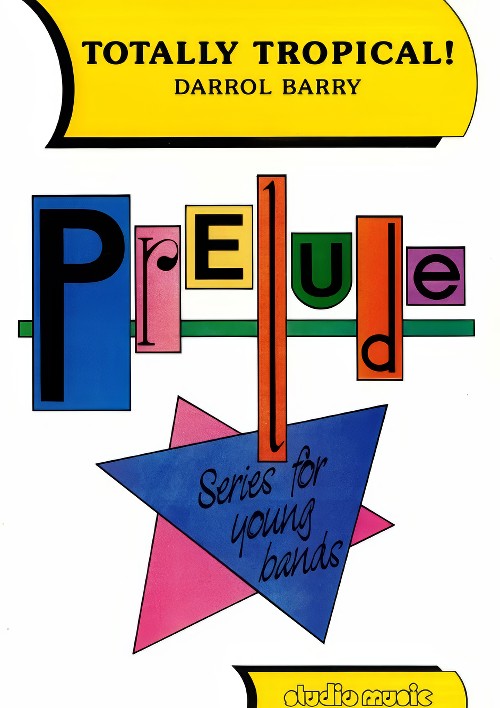 £44.95
£44.95Totally Tropical! (Concert Band - Score and Parts) - Barry, Darrol
Totally Tropical! is in bright Caribbean mood and will benefit from good, rhythmic playing. Flutes, oboes, clarinets and trumpets all have to play the little chromatic figure that starts the main tune and this may need slow practice to become fluent. Additional percussion instruments may be added to give a 'Calypso' sound.Titles in the Prelude Series are specifically scored for bands with few, if any, bass instruments but will sound well on larger ensembles. The bass line is playable by any combination of bass clarinet, bassoon, baritone saxophone, trombone, euphonium or tuba; in the event that none of these is available, the part for trombone/euphonium (B flat TC) can be played by tenor saxophone. The tuned percussion part is entirely optional and can be played by any available instrument(s). Each piece also includes a preliminary exercise. This is always in the same key as the accompanying piece and consists of a scale and chord progression that can be used for improving ensemble, balance, intonation and instrumental facility by changing tempo, articulation and dynamics.Duration: 1:45
Estimated dispatch 7-14 working days
-
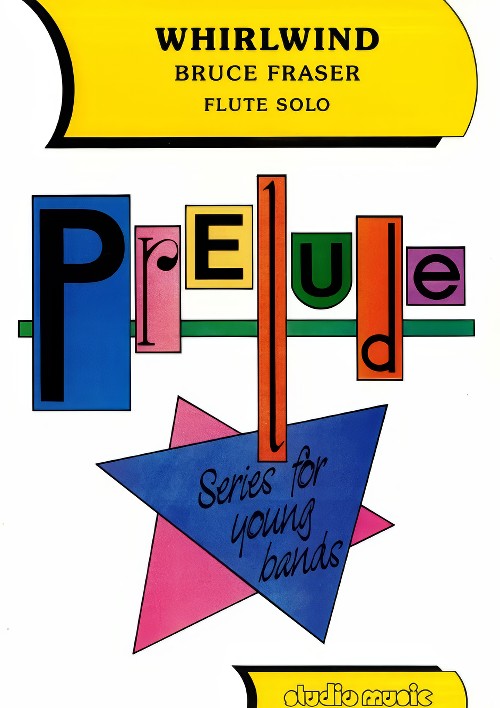 £44.95
£44.95Whirlwind (Flute Solo with Concert Band - Score and Parts) - Fraser, Bruce
Whirlwind is a flute solo and (despite the title!) it will be found that a steady waltz tempo works best. Obviously, it is important that the accompaniment remains delicate and that dynamics are adhered to.Titles in the Prelude Series are specifically scored for bands with few, if any, bass instruments but will sound well on larger ensembles. The bass line is playable by any combination of bass clarinet, bassoon, baritone saxophone, trombone, euphonium or tuba; in the event that none of these is available, the part for trombone/euphonium (B flat TC) can be played by tenor saxophone. The tuned percussion part is entirely optional and can be played by any available instrument(s). Each piece also includes a preliminary exercise. This is always in the same key as the accompanying piece and consists of a scale and chord progression that can be used for improving ensemble, balance, intonation and instrumental facility by changing tempo, articulation and dynamics.Duration: 1.30
Estimated dispatch 7-14 working days
